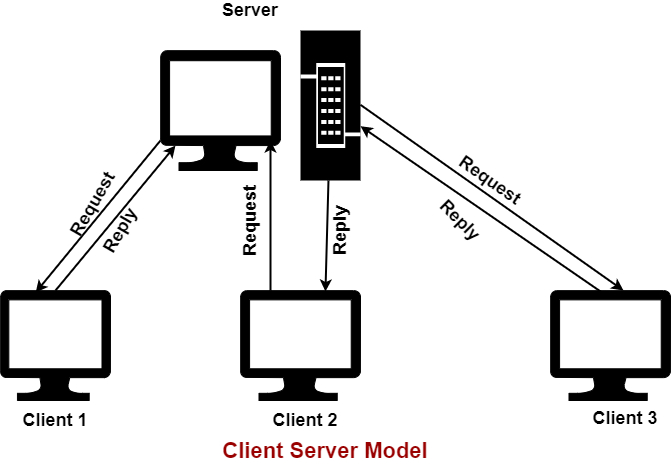
 Data Structure
Data Structure Networking
Networking RDBMS
RDBMS Operating System
Operating System Java
Java MS Excel
MS Excel iOS
iOS HTML
HTML CSS
CSS Android
Android Python
Python C Programming
C Programming C++
C++ C#
C# MongoDB
MongoDB MySQL
MySQL Javascript
Javascript PHP
PHPPhysics
Chemistry
Biology
Mathematics
English
Economics
Psychology
Social Studies
Fashion Studies
Legal Studies
- Selected Reading
- UPSC IAS Exams Notes
- Developer's Best Practices
- Questions and Answers
- Effective Resume Writing
- HR Interview Questions
- Computer Glossary
- Who is Who
What is Client-Server Architecture in Computer Network?
In this architecture, a specific computer is known as a server, specially designated to provide various services to other computers known as clients. In simple terms, the server can be defined as a provider of services, and the client can be a requester to services. The client requests any information from the server, and the server, in turn, responds to the client request, as shown in the below figure −

The most common client-server arrangement method is a LAN made out of microcomputers linked to a network server, which serves all LAN clients.
Classifications of Client/Server Architecture
Following is the classification of Client/Server Architecture −
Two Tier-Architecture
In the two-tier architecture, there exists only two parties; one is the client, and the other is the server. The main benefit of the client/server model is its simplicity. But there is a major problem when 100s of clients request the data from the server simultaneously. Every client will have to wait for its turn to come.
Three-Tier Architecture
It is also referred to as multi-tier architecture. In this architecture, there is a middle layer within the client and the server. It clarifies the difficulty of waiting time by clients. It maintains a queue of requests by different clients, and the client can do their work; meanwhile, the server is busy processing other client’s request. The middle layer forwards the request, and the server, in turn, replies to the client.

